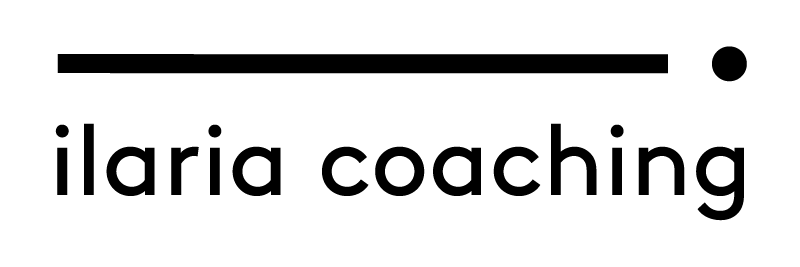Your CV is finally ready…well done!
You have analysed the role description and tailored your CV accordingly.
You are nearly there. Now it’s time to tell your story: a well structured Cover Letter will enhance your profile and support your chances to get the interview.
The Cover Letter frames your skills and competencies to put your experience in context. Don’t miss out on the opportunity to share your story, explain your motivation for the role and connect with the readers.
This article focuses on Analysis, Structure and Storytelling.
Common challenges
Content – What should we write? How do we start? – Structure / Format – Once we know what to write, how do we structure our content? How do we prioritise relevant content? – Time – as we said in relation to CV writing, writing professional documents takes time and we often underestimate the actual effort needed to tailor our documents (while overthinking the process in our mind).
Lack of reality check + overthinking the process = a very dangerous duo. It could easily lead to frustration and procrastination.
1) Share your story, create your narrative, connect with the readers
A Cover Letter gives you the opportunity to put your skills and experience in context.
You can expand on them to better explain your academic and professional journey, and demonstrate your motivation for the role.
How do we tell our story?
Look for milestones in your career and/or personal life so far.
- STRUCTURE your message logically
- CONNECT with your audience emotionally
- ARTICULATE your objective clearl
2) Make your Cover Letter relevant and fit for purpose
Criteria to assess the effectiveness of a Cover Letter include:
• Relevance to the role description: it has to be clear you took time to customise your Cover Letter. Highlight how you can contribute to the Role, the Team and the Company.
• Consistency with your CV: expand on your academic and professional journey so far explaining how the competencies you have developed are relevant to the role you are applying for.
• Structure: organise your content clearly, with a beginning, a middle and an end that are logically connected. Include relevant examples so that your motivation for the role will shine through.
Look for milestones in your career so far: think about moments that have defined your choices - a decision you made, a realisation, an academic qualification, a role that has defined your professional path, a relocation, a mentor you met...
3) Tailor your Cover Letter to the role description
We demonstrate effective business writing skills by implementing a blend of Analysis, Structure and Storytelling.
Analysis: make the Cover Letter fit the role description like a glove. Demonstrate you took the time to tailor your document: you care and believe in investing you time in it. Include references to the role description to demonstrates you understand the requirements of the role.
Structure: create a logical progression of concepts, organise tour content clearly. Be assertive in your communication, be clear, concise and straight to the point. Include both descriptive and persuasive terminology. Make the document visually appealing and easy to navigate through.
Storytelling: include elements of storytelling to engage with your audience. Share something that makes your document unique to your experience. Sharing your professional story makes your document memorable: we are naturally curious and we tend to remember a series of events organised in a plot better than a list of general bullet points.
Please see below a Cover Letter sample to give you a better idea of the structure and storytelling components. Please feel free to adapt content and structure to your own unique circumstances.
RE: ASSISTANT VICE PRESIDENT – SUPPLIER FINANCE
Dear Hiring Team,
I would like to apply for the position of Assistant Vice President – Supplier Finance.
I am a Trade Finance specialist with 15 years’ international experience in the Financial Services sector.
I am used to building strong stakeholder relationships and as Client Service Operator (Deutsche Bank, Dublin) I am currently managing my Client Portfolio. I focus on quality and service standards and collaborate with internal stakeholders to provide client solutions and timely responses to queries. I am responsible for SOPs reviews, updates and process documentation.
I have strong Process Improvement and Project Coordination competencies having worked on a variety of business initiatives and IT System migrations.
I started my career in the Financial Services sector in 2005. I worked for companies such as Barclaycard International Plc. and SEB Life International, and in 2014 I joined Deutsche Bank. Over the years I have progressed through different roles gaining extensive Account Management, Transaction Banking, IT System Implementation and People Management experience. I am used to collaborating with cross-functional teams on multiple projects.
As Senior Analyst – Trade Finance Client Service Team – EMEA (Deutsche Bank, Dublin 2016 – 2018) I provided support across different areas, including Client Service, Team Performance Management, Recruitment & Training, and Change Management.
I believe I will be a very passionate and competent Assistant Vice President:
- I bring extensive Buyer Support and Client Relationship experience. I ensure compliance requirements are met throughout the client onboarding lifecycle.
- I have extensive experience with process improvement and IT System implementation, having collaborated with Legal Teams and Project Managers on new Platform and System migrations. I have developed strong UAT and System Training competencies. I am used to running Platform demonstrations for Buyers.
- I bring strong investigative, analytical and reporting skills: I am used to analysing complex data to define priorities and action plans.
I look forward to hearing from you, and I would welcome the opportunity to further discuss my application.
Yours Sincerely,
Name Surname
Put your experience in context:
- Expand on your CV to better explain your academic and professional journey.
- Demonstrate your motivation for the role: highlight how you can contribute to the Role, the Team and the Company.
- Structure your Cover Letter: you are sharing your story and every story has a beginning, a middle and an end.
Explain your professional journey so far, share your story and your relevant experience & transferable skills.
Conclude your Cover Letter inviting the readers to take an action as a result of your message.


